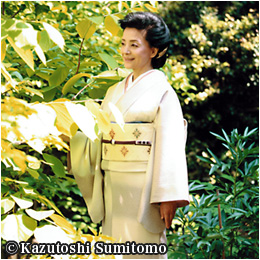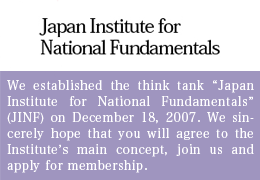Japanese Must Take the Chinese Passion for Learning Seriously
With the upper house election over, the administration of Prime Minister Shinzo Abe must redouble its efforts to resolve critical issues facing Japan, including a revision of its post-war constitution, the nation’s nuclear future, and participation in the Trans-Pacific Strategic Economic Partnership Agreement (TPP). If Japan, as an independent democracy, lacks resolve and senselessly delays dealing squarely with these issues, it will run a serious risk of being overwhelmed by China. Japan would then be grudgingly forced to play second fiddle to China, subject to humiliation whether it likes it or not. This I have come to sense most strongly after coming to grips with the contemporary Chinese passion for “absorbing” just about anything under the sun that they deem important for themselves as well as their nation.
According to a survey conducted by the Pew Research Center, based in Washington, D.C., 74% of Chinese respondents and 38% of South Koreans, have a “very unfavorable” opinion of Japan. Including those who said they have a “somewhat unfavorable” opinion of Japan, the rates of respondents with unfavorable views stand at 90% and 77% for China and South Korea, respectively. Anti-Japanese sentiment appears to now be at a peak in both China and South Korea.
Despite the anti-Japanese sentiment in China, there has been a curious “Japan boom” in China over the past decade. One phenomenon of this boom has been a rush of translations into Chinese of The Chrysanthemum and the Sword, a monumental study on Japan by American anthropologist Ruth Benedict (1887-1948). According to Professor Shiro Takahashi of Meisei University in Tokyo, one of the nation’s leading specialists on education, there reportedly are at least 50 different versions of the Benedict book in Chinese translation.
I fondly recall reading the book in Japanese translation when I was in the third year of middle school in snowy Nagaoka City, Niigata Prefecture. But then, I do wonder why the book is read so avidly in China nearly 70 years after its publication. Why are the Chinese so intrigued with this country that they supposedly detest so much?
Here’s how Prof. Takahashi explains it:
When in office, former Prime Minister Junichiro Koizumi stubbornly continued to visit Yasukuni Shrine, disregarding mounting Chinese objections and pressure. Representing the people of Japan who supported him, Koizumi steadfastly stood by his principles of honoring the nation’s war-dead – an act that clearly had not only no advantage for Japan but was actually detrimental. As a result, the Chinese became immensely curious about Koizumi – this Japanese prime minister who undauntedly continued to visit Yasukuni despite explicit threats from China – and what manner of people the Japanese were who solidly stood behind Koizumi, who had exceedingly high approval rates. Unable to find answers to these questions, many Chinese turned in earnest to the Benedict book.
Did China Really Teach Japan Everything?
Prof. Kato points to the March 2011 mega quake and tsunami as another important factor that drove the Chinese to read The Chrysanthemum and the Sword, explaining: “It is said that virtually no Chinese students studying in Japan participated in volunteer activities following the disaster. In sharp contract, a truly impressive number of Japanese volunteers, including students, offered their services. Also, the victims helped each other, with the stronger of them helping the weaker. The Chinese are said to have been immensely impressed when they saw how the Japanese helped each other under such extreme circumstances, concluding that Japan has somehow managed to retain the traditional values that China had taught but which it has sadly lost.”
Prof. Kato notes that such an awareness compelled the Chinese to pursue their study of the Benedict book still further in an effort to discover why the Japanese behaved in such admirable fashion. However, he also points out that the Chinese no doubt believe that all of the great qualities the Japanese have were passed on to them by the Chinese themselves.
(It is indeed true that the merits of altruism were emphasized in the Confucianism brought from China in the 7th century. After the return of Japanese missions to the Sui Court, Prince Shotoku wrote a 17-point constitution in 605 decreeing that harmony be valued and quarrels be avoided – an interpretation thought by many to precisely reflect the Analects of Confucius.)
The Chinese are dying to come to grips with the Japanese mind. They truly wonder why the Japanese are so “different from us,” as 90% of them claim to dislike the Japanese. This despite being convinced that great things about the Japanese were originally due to the virtues their ancestors benevolently taught. These are the factors that have caused copies of nearly half a dozen translations of the Benedict book to be stacked in bookstores across the country.
“The content of these translations is pretty lackadaisical, including the title and chapters which are often far from what was contained in the original book. Some carry nearly 200 fake photographs purportedly taken of the ‘Nanjing Massacre’ which are absolutely irrelevant,” continues Takahashi. He adds with a smile: “Some of those translations include an article that you, Ms Sakurai, wrote years ago for the ‘Shokun’ monthly magazine regarding Nanjing.”
Journalist Satoru Tomisaka, well versed in Chinese affairs, notes that Japanese studies in China have been active for decades, adding that books on Japan actually sell very well:
“Books on Japanese business leaders, including Konosuke Matsushita and Soichiro Honda, have all been popular in China. There is a Chinese expression — ‘Ruben Guizu’ — which means a ‘Japanese ogre.’ In point of fact, ‘ogre’ refers to a strongman who controls a whole region – someone who is ‘bad’ but simultaneously extremely able. In other words, the Chinese detest and disdain the Japanese on the surface, and yet give them wide recognition behind the scenes.”
Prof. Takahashi observes that the Chinese have a propensity for becoming arrogant when they sense their counterparts are inferior but that they are always eager to learn from others – even from Japanese – if and when they recognize their counterparts as superior to them.
“I admire their attitude towards learning,” continues Prof. Takahashi. “Unlike us Japanese, who tend to think we must study for learning’s sake, the Chinese show a voracious appetite for learning that includes the strict setting of specific goals for their study. China is a country where it is especially difficult to excel beyond others and win the race for survival. Therefore, their resolve to study is far from lukewarm.”
Having watched what makes the Chinese tick, I completely agree with Prof. Takahashi. Indeed, they study very hard, regardless of whether they subsequently put into practice what they learn. Chinese attitude towards study is exemplified by the late Admiral Liu Huaqing (1910-2011), the father of the modern Chinese Navy, who wholeheartedly studied the work of Alfred Thayer Mahan (1840-1914), an American and author of The Influence of Sea Power upon History, 1660-1783 (published in1890). Mahan twice served as President of the Naval War College and had a great influence on modern American naval strategy.
Beware the Negative Aspects of Our Nation Today
Having thoroughly studied what caused the collapse of the Soviet Union, China has resolutely pursued reform and more liberal policies in economics only. The objective has been to avoid walking in the footsteps of Moscow, which China believes prematurely implemented political reform.
Chinese Communists have been dubbed “red aristocrats,” with corruption having become a serious malaise in Chinese society. The Chinese leadership has ordered all of the 82 million members of the Chinese Communist Party to read The Old Regime and the Revolution, an 1856 book by French philosopher Alexis de Tocquiville (1805-1859). Reading this book containing references linking corruption among French aristocrats to the French Revolution is presumably a learning process deemed mandatory by a communist leadership desperately trying to avoid a similarly bloody purge through a people’s revolution.
Would it be an exaggeration to say that learning on the part of the Chinese government, as well as Chinese individuals, inevitably becomes a serious business because it is undertaken under circumstances directly linked with the rise and fall of the institutions and individuals involved? There are 1.3 billion people in this race for survival. And of those 1.3 billion people, there are 82 million Communist Party members who have so far managed to survive amid unprecedented corruption and the prosperity it has brought about. They live in a world in which the tiniest negligence could be fatal.
Meanwhile, Japanese youths are at a serious disadvantage: Denied a chance to compete at school in their childhood, they are constantly taught that they should all behave similarly, as they are all equals, and that there is nothing really wrong with being weak and fragile – that it is in fact a rather admirable quality. The learning our youths experience in our courteously protective culture must inevitably differ in terms of avarice and ambition from what their Chinese counterparts experience.
Even if the Chinese method of learning is nonsensical, I must say that I still respect their attitude toward learning. While the Chinese have come to value Japanese virtues, I am afraid we ourselves have slipped into ugly selfishness, as demonstrated by the many cities that have rejected debris from Fukushima and other areas affected by the tsunami and nuclear fallout. Regrettably, we have also seen some victims who use their misfortune to take advantage of the situation. As I see how earnestly the Chinese are trying to learn, I cannot help but feel that we Japanese must make every effort to rectify these negative aspects of our contemporary society.
(Translated from “Renaissance Japan” column no. 568 in the August 1, 2013 issue of The Weekly Shincho)








